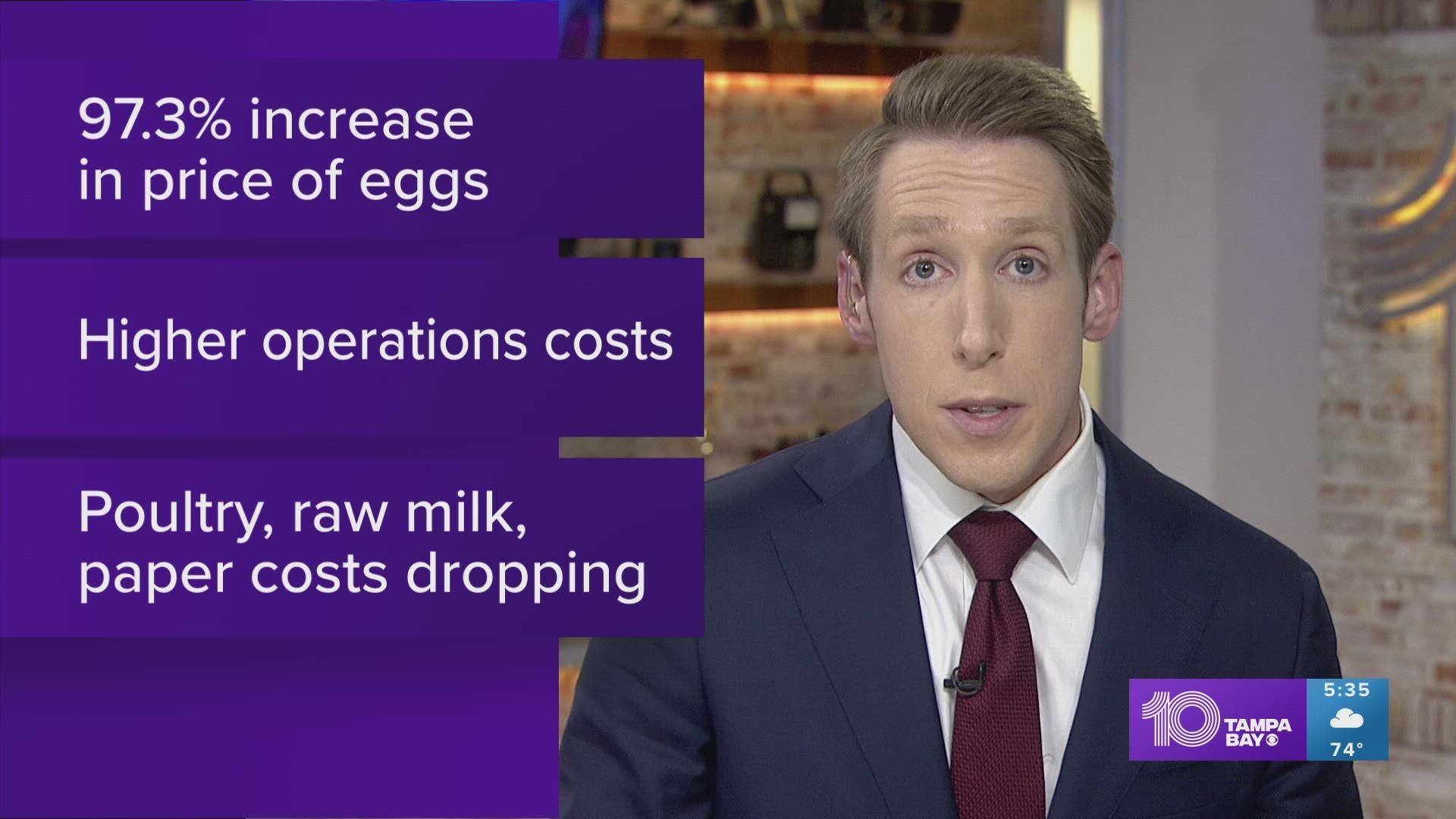ST. PETERSBURG, Fla. — Walk into any grocery store and you'll notice that virtually everything is more expensive than usual. Eggs, in particular, have customers shelling out more cash than they have in years.
In fact, the consumer price index for eggs rose more than 10% in October alone for an average price of $3.42 per dozen, according to the U.S. Bureau of Labor Statistics.
For context, the average price for a dozen Grade A large eggs was $1.82 in October 2021.
An outbreak of the highly-infectious bird flu is largely to blame for the sharp price increase. According to the Centers for Disease Control and Prevention, more than 50 million birds like chickens, turkeys and ducks have been affected by the virus since February.
Highly Pathogenic Avian Influenza, which is the type of bird flu we're seeing in this outbreak, has a 90%-100% mortality rate in chickens, the CDC says.
As a result, around 37 million egg-laying hens have died since the start of 2022, Brian Moscogiuri, a global trade strategist at Eggs Unlimited, told CNBC.
According to the USDA, 8.83 billion eggs were produced in the U.S. in September 2022 compared to 9.18 billion in September 2021.
Meanwhile, chicken prices started to fall in October after steadily increasing since the start of the year.
So, why is the bird flu causing egg prices to soar but not chicken prices?
We cracked the case — and it has to do with the type of bird that is raised for consumption.
There are two different types of chickens known as "broilers" and "layers." The "layers," as you may have guessed, are egg-laying hens. "Broiler" chickens, on the other hand, are raised primarily for meat. "Broilers" are often raised to be large and healthy with more breast meat for the consumer market, according to Nature's Best Organic Feeds.
"Broilers" aren't affected by the bird flu to the same extent as "layers," largely because of their different life spans.
As the agriculture site AgriFarming explains, "broilers" are raised for about 38 to 42 days until they are slaughtered for consumption. "Layers" reach maturity around 20 weeks and begin laying eggs around 72 weeks. Because "layers" are around longer, they are more susceptible to bird flu.
According to the USDA, monthly "broiler" production is also up, which could be contributing to the price drop at the grocery store.
Still, chicken prices, along with most other foods, are significantly higher than they were a year ago. The average price for a pound of boneless chicken breast was $4.67 in October 2022 compared to $3.59 in October 2021, according to data from the U.S. Bureau of Labor Statistics.

